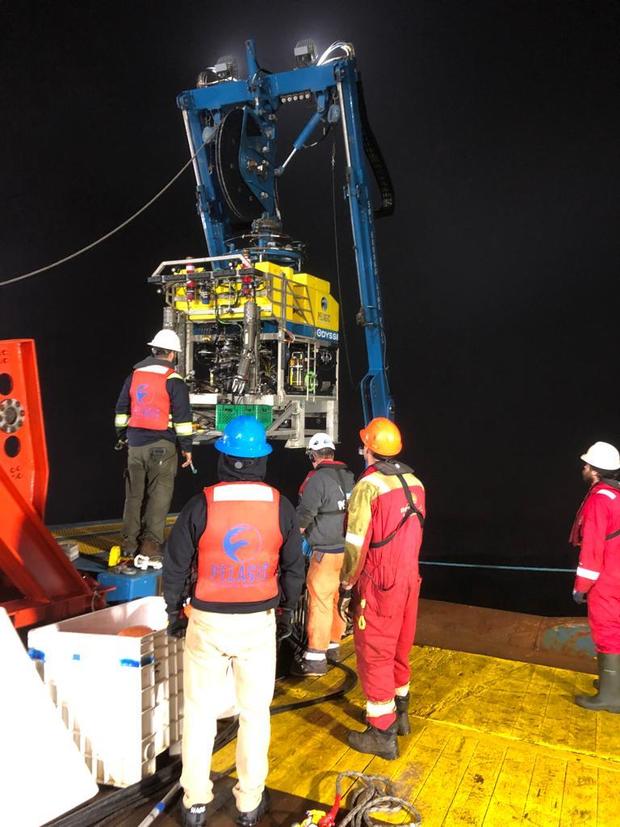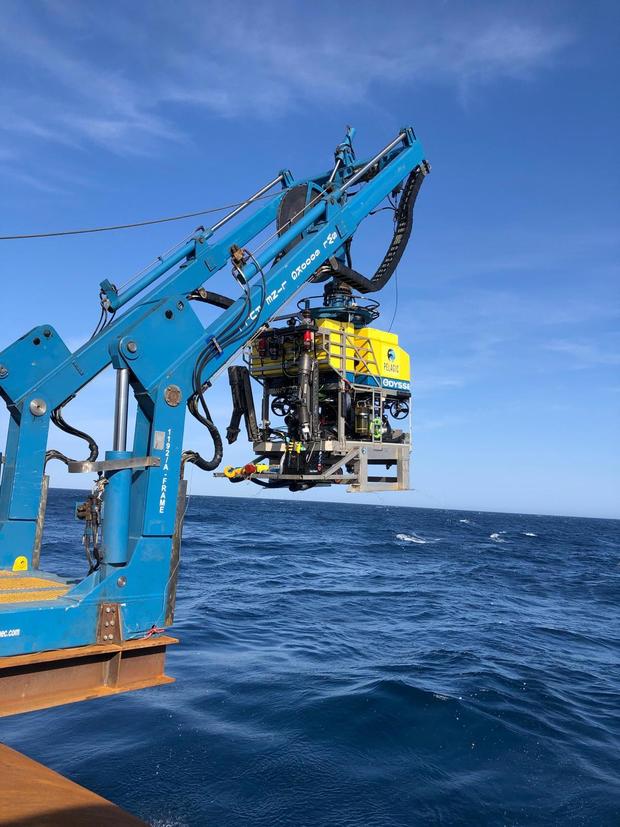New photos show deep-sea robot being used in Titan sub recovery efforts
A deep-sea robot continued to search through the weekend for debris from the Titan submersible, which imploded with five people on board while attempting a dive to explore the wreckage of the Titanic.
The robot, a remotely operated vehicle, or ROV, called Odysseus 6K, was probing the seafloor in the North Atlantic on Sunday in its fourth dive to the area since locating a debris field last week that included fragments of the Titan sub, authorities confirmed. Odysseus found the debris field on Thursday, several days into a massive search and rescue mission that transitioned into a recovery effort once officials determined that the debris field was "consistent with a catastrophic implosion of the vessel."
Pelagic Research Services, the company that deployed the Odysseus and is partnered under a unified command with the Transportation Safety Board of Canada and the U.S. Coast Guard, shared new images of the deep-sea robot alongside an update posted to Facebook on Sunday.
Ed Cassano, the project manager for subsea assets aboard the Horizon Arctic, a Canadian vessel that played an integral role in the initial search for the Titan and carried the Odysseus out to sea, said in a statement that the robot has "been successful in investigating identified objects of interest as instructed by onboard incident command personnel."
Still, as the ROV went ahead with recovery efforts along the seafloor nearly 2 1/2 miles below the surface — the approximate depth of the Titanic wreck — officials noted the challenges that come with the recovery effort.
"This recovery phase is a remarkably difficult and risky operation, especially at this depth," said Jeff Mahoney, a spokesperson for Pelagic Research Services, in a separate statement. "Given its continuous operation under the incredible atmospheric pressures, temperatures and environmental stresses, it's a testament to the skill of the team and the engineering of Odysseus."
The update came as the U.S. Coast Guard announced Sunday that it launched an investigation into the loss of the Titan sub and what factors may have led to the catastrophic implosion. The Coast Guard's Marine Board of Investigation, the highest level of investigation that the agency conducts, will include international authorities from Canada, France and the United Kingdom.
As a first step in the investigation, authorities will collect evidence by salvaging debris, said Chief Investigator Capt. Jason Neubauer at a news conference on Sunday. Investigators will likely hold a formal hearing to get witness testimony after evidence collection is complete, Neubauer said. The investigation will also examine potential "misconduct, incompetence, negligence, unskillfulness or willful violation of law" by OceanGate, the company that owned the Titan sub, and by the Coast Guard, the service branch said in a statement. The Coast Guard did not share a timeline for the investigation.





